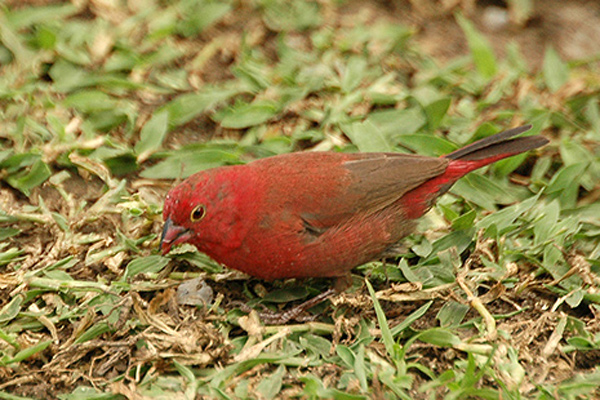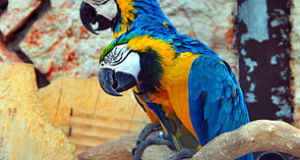 Wild finches of almost every species consume beetles, spiders, caterpillars and other invertebrates throughout the year, and in large quantities both before and during the breeding season. While those we keep as pets may thrive on seed-based diets, providing them with a variety of insects will improve their health and encourage breeding. A reader’s note concerning his success with Bronze-Winged Mannikins and the onset of the spring breeding season here in the Northern Hemisphere have sparked me to take another look at this important topic.
Wild finches of almost every species consume beetles, spiders, caterpillars and other invertebrates throughout the year, and in large quantities both before and during the breeding season. While those we keep as pets may thrive on seed-based diets, providing them with a variety of insects will improve their health and encourage breeding. A reader’s note concerning his success with Bronze-Winged Mannikins and the onset of the spring breeding season here in the Northern Hemisphere have sparked me to take another look at this important topic.
Insects in Finch Diets
Reader Tom commented (see Insects for Birds: Zoo Med’s Anole Food) that his Bronze-Winged Mannikins enjoyed freeze-dried flies, and were breeding well. In the wild, he discovered, this species times reproduction to the swarming of termites. Not wishing to establish a termite colony in his home (there are options, however, please see below!), Tom found that his finches readily accepted the dried flies in Zoo Med’s Anole Food as a replacement.
Many popularly-kept finches breed at a time when they can best take advantage of an abundance of certain insects. We are learning that their abilities to “predict” events such as invertebrate breeding assemblages are quite sophisticated. A shorebird known as the Red Knot, for example, which undergoes a nearly pole-to-pole migration, somehow arrives at the Delaware Bay just as Horseshoe Crabs are laying eggs (the eggs fuel the rest of the Red Knot’s trip). That such fine-tuning has evolved shows, I believe, the importance of these foods.
 Finches might get by without them, but their enthusiastic response to live and processed insects will leave you with no doubt as to their value. On the other hand, it’s virtually impossible to keep, much less breed, many softbills if a steady supply of insects is not available. Included among these are Shama Thrushes, Superb Starlings, Indian Hill Tits, Pittas and others.
Finches might get by without them, but their enthusiastic response to live and processed insects will leave you with no doubt as to their value. On the other hand, it’s virtually impossible to keep, much less breed, many softbills if a steady supply of insects is not available. Included among these are Shama Thrushes, Superb Starlings, Indian Hill Tits, Pittas and others.
In many cases, the provision of increased amounts of insect food (at the right time of year) can help to bring birds into breeding condition.
Procuring Live Insects
During my years working with the Bronx Zoo’s bird collection, I always maintained insect traps as a means of providing dietary variety. The ZooMed Bug Zapper is a light-based trap that is modeled on those used in zoos. Assuming that you employ it in an area where pesticides are not a concern, this trap provides an excellent means of collecting insects for your birds.
There are quite a few other ways to provide your birds with nutritious live insects. I enjoy collecting my own, utilizing a number of home-made traps and insect nets. Raising mealworms, earthworms, sowbugs, roaches and others is enjoyable, relatively simple, and provides a variety of differently-sized individuals year-round.
Processed Insects
A number of products marketed for pet reptiles, such as canned crickets, grasshoppers, caterpillars and shrimps (shrimp are an old-timer’s favorite for bringing out the feather color) can be put to good use by bird-keepers.
I’ve written about insect collecting and processed insects in greater detail elsewhere…please see the articles below to learn more about these often over-looked bird-feeding opportunities.
Other Protein-Rich Foods
Egg Food is a unique and very useful product that should be part of nearly all finch diets. You can also use hard boiled eggs and cottage cheese rolled in a bit of ground Softbill Select both have been long favored by zookeepers and professional breeders.
Further Reading
Collecting Live Food: an Entomologist’s Technique
Diets of Free-Living Waxbills and Grassfinches
Red-billed Firefinch image referenced from wikipedia and originally posted by Tom Tarrant
 That Bird Blog – Bird Care and History for Pet Birds
That Bird Blog – Bird Care and History for Pet Birds



